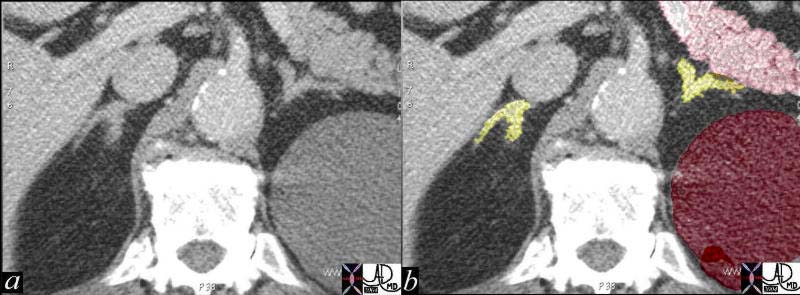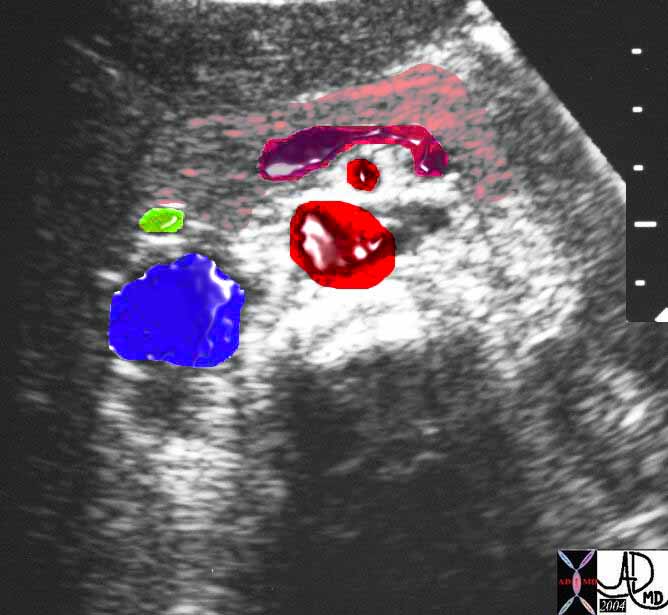The Tail of the Pancreas
The tail is narrow, usually reaching the inferior part of the gastric surface of the spleen. It is contained between two leaves of the splenorenal ligament together with the splenic vessels.This is its narrow left end and it may be thick or blunted. It passes between the two layers of the splenorenal (lienorenal) ligament with the splenic vessels. Its end usually contacts the hilum of the spleen. The exact junction of the body and tail is not defined anatomically.

40 year old female with a plump appearing tail of the pancreas 25043 Courtesy Ashley Davidoff MD pancreas size normal anatomy
imaging radiology USscan size variant
The posterior relationships of the body and tail of the pancreas include the posterior attachment of the left crus of the diaphragm, the left suprarenal gland, the upper pole of the left kidney, and hilum of the spleen.

In this CT scan of the upper abdomen the relationship with the left adrenal, (yellow) and the kidney (cyst in red) is revealed.
The left crus is hypoplastic but its position is nferred bythe well developed right sided crus. Courtesy Ashley Davidoff MD
27644c02
The splenic vein above and the left renal vein below lie close to one another behind the body and tail of the gland.
At the upper border of the body and tail of the pancreas, the splenic artery courses to the left from its origin at the celiac axis. The transverse mesocolon is attached to the anterior part of the lower border of the gland. The splenocolic ligament attaches the splenic flexure of the colon to the hilum of the spleen and brings it adjacent to the tail of the pancreas.

This US scan through the body of the pancreas shows the pancreas (pink) anteriorly positioned in relation
to the ever present splenic vein (maroon) which parallels its course. The SMA (small red) lies leftward of
the confluens of the splenic vein with the SMV and the aorta (big red) les even further posteriorly.
The bile duct (green) lies in the head while the IVC (blue) lies posteriorly, Courtesy Ashley Davidoff MD
22958b01
